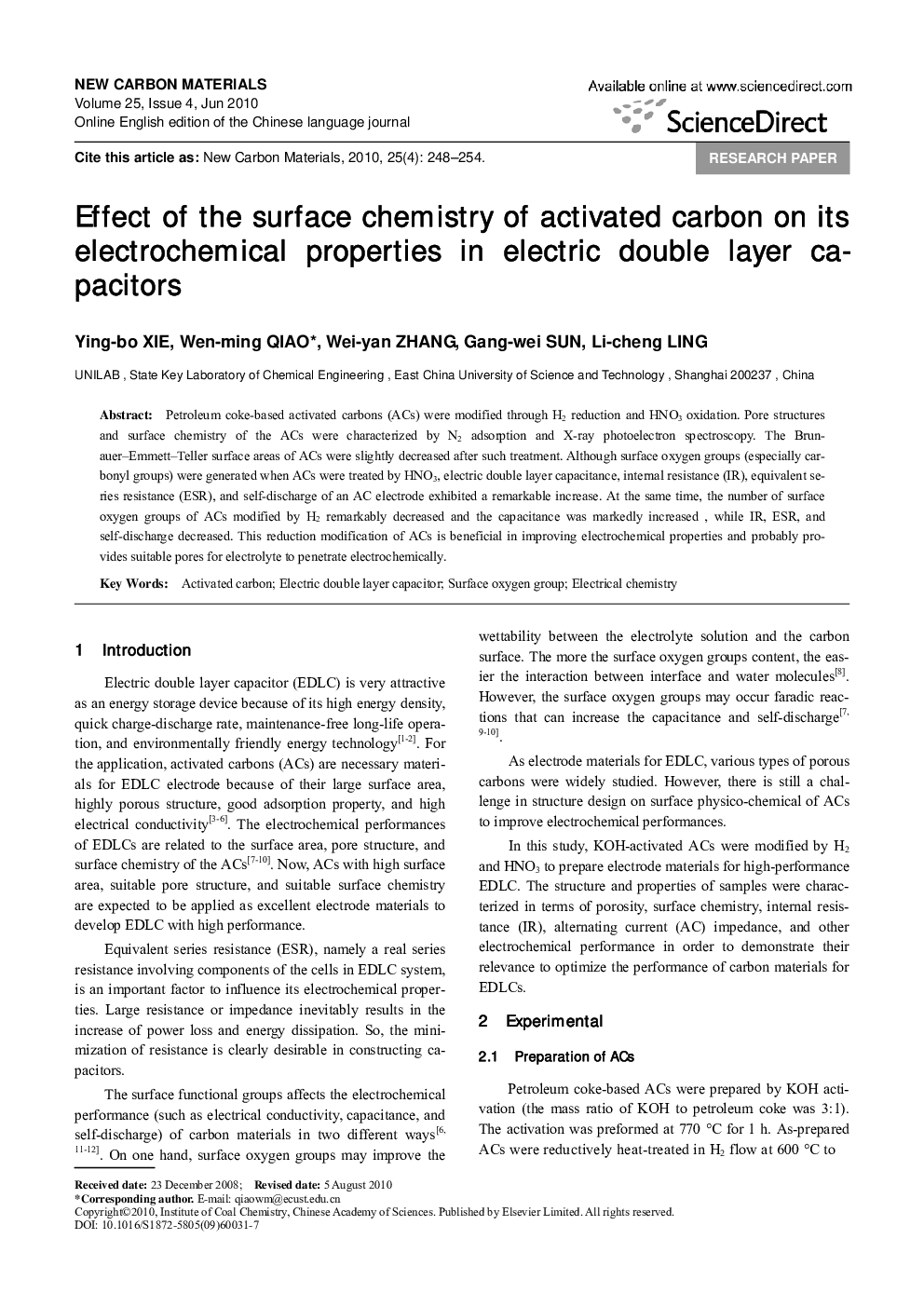| Article ID | Journal | Published Year | Pages | File Type |
|---|---|---|---|---|
| 1558469 | New Carbon Materials | 2010 | 7 Pages |
Petroleum coke-based activated carbons (ACs) were modified through H2 reduction and HNO3 oxidation. Pore structures and surface chemistry of the ACs were characterized by N2 adsorption and X-ray photoelectron spectroscopy. The Brunauer-Emmett-Teller surface areas of ACs were slightly decreased after such treatment. Although surface oxygen groups (especially carbonyl groups) were generated when ACs were treated by HNO3, electric double layer capacitance, internal resistance (IR), equivalent series resistance (ESR), and self-discharge of an AC electrode exhibited a remarkable increase. At the same time, the number of surface oxygen groups of ACs modified by H2 remarkably decreased and the capacitance was markedly increased, while IR, ESR, and self-discharge decreased. This reduction modification of ACs is beneficial in improving electrochemical properties and probably provides suitable pores for electrolyte to penetrate electrochemically.
